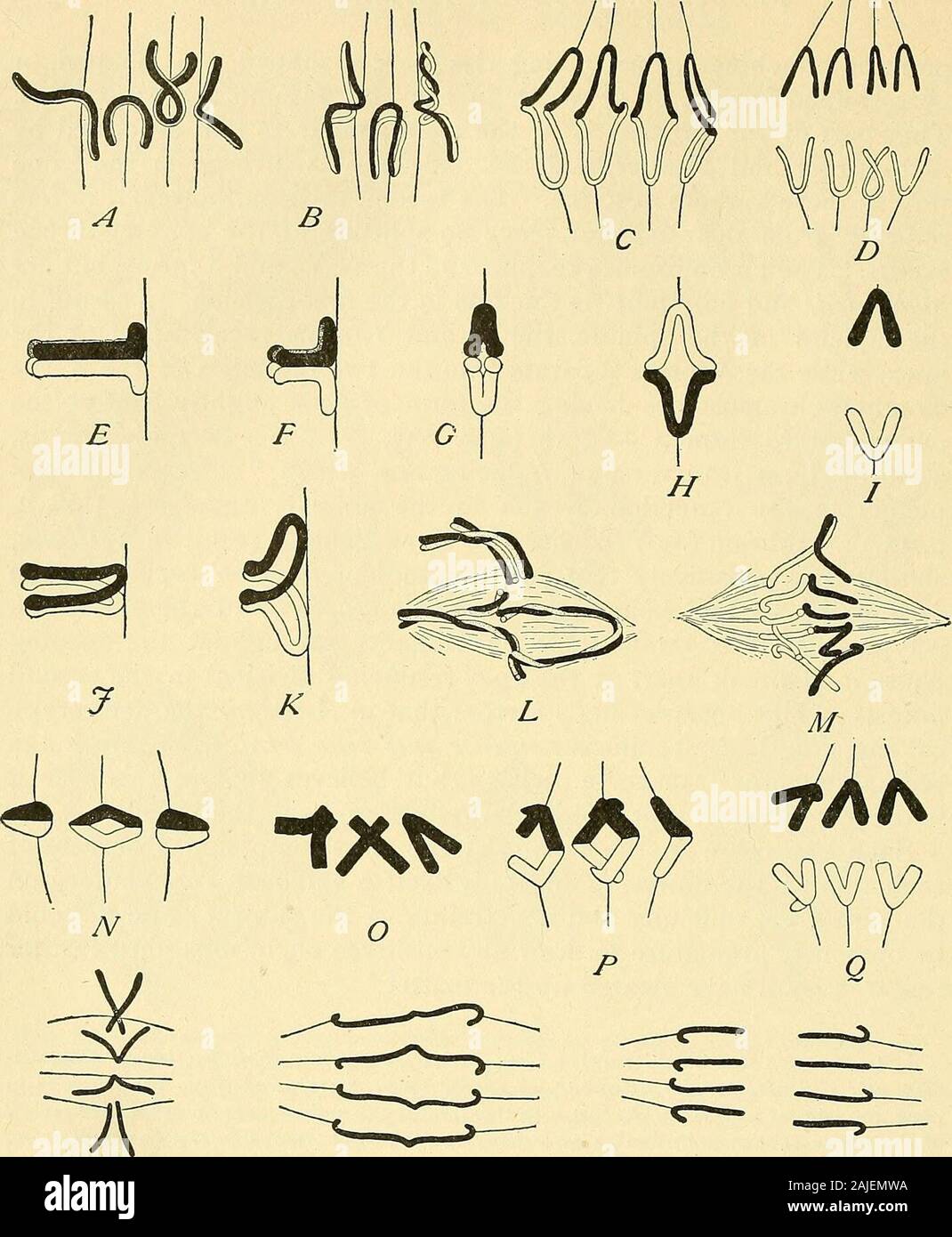The cell in development and inheritance . r may bereconciled with his own. The essence of Strasburgers interpretation is as follows. In theprophases of the first division the chromosomes first undergo a longitudinal division, shortento form double rods, and then again split lengthwise in a plane at right angles to the first.The following stages vary even in the same species {Lilium); and here lies the explanationof much of the divergence between the accounts of different observers. (0 Ir* the typicalcase, the chromosomes are placed radially, with one end next the spindle; and, during themetaph

Image details
Contributor:
The Reading Room / Alamy Stock PhotoImage ID:
2AJEMWAFile size:
7.1 MB (318.8 KB Compressed download)Releases:
Model - no | Property - noDo I need a release?Dimensions:
1434 x 1742 px | 24.3 x 29.5 cm | 9.6 x 11.6 inches | 150dpiMore information:
This image is a public domain image, which means either that copyright has expired in the image or the copyright holder has waived their copyright. Alamy charges you a fee for access to the high resolution copy of the image.
This image could have imperfections as it’s either historical or reportage.
The cell in development and inheritance . r may bereconciled with his own. The essence of Strasburgers interpretation is as follows. In theprophases of the first division the chromosomes first undergo a longitudinal division, shortento form double rods, and then again split lengthwise in a plane at right angles to the first.The following stages vary even in the same species {Lilium); and here lies the explanationof much of the divergence between the accounts of different observers. (0 Ir* the typicalcase, the chromosomes are placed radially, with one end next the spindle; and, during themetaphase, they open apart along the first division-plane, from the spindle outwards, to formI—shaped figures. These figures meanwhile open apart from the free end inwards along thesecond division-plane. Thus arise the characteristic 0-shaped figures, the daughter-Vshaving separated along the first (equatorial) division-plane, while the two hmbs of each Vhave resulted, not through bending, but from a second (axial) split (Fig. 135, E-H^. The. R S T Fig. 135. — Diagrams illustrating different accounts of reduction in the flowering plants. A-D. Vegetative mitoses (heterotypical form) in Picea. [Belajeff.] E-I. Illustrate Strasburgers earlier account (95) and the later one of Guignard, of the firstmaturation-division. E. Doubly split rod. F. Metaphase, in profile. G. The same en face, showing the heterotype ring. H. I. Opening out and breaking apart of the ring. y-M. Later account of Strasburger and Mottier {cf. Figs. 133, 134). y. Longitudinally split, V-shaped chromosome of first division. K. Opening out of the ring. L. Prophase of seconddivision, showing longitudinally split segmented spireme. M. Initial anaphase of second division. N-Q. First division. [Belajeff.] N. Longitudinally split chromosomes, viewed in the equa-torial plane. O. The same viewed in the axis of the spindle. P, Separation of the daughter-chromosomes. Q. Anaphase, all the chromosomes assuming the V-form. R- T.